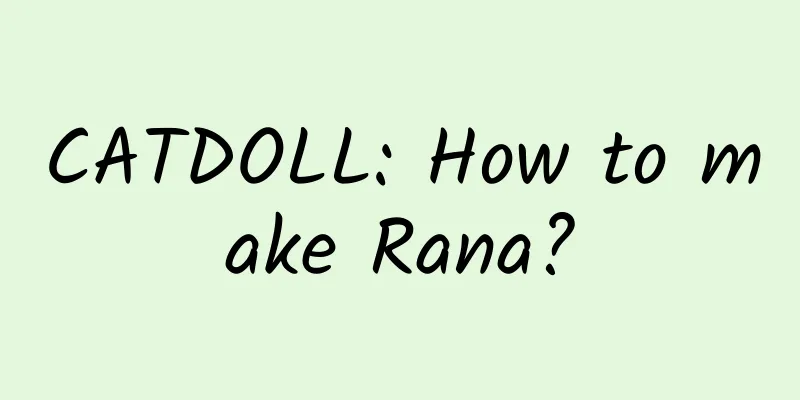CATDOLL : CATDOLL: How to keep bees?

|
As long as you don't kill me, I can still raise you. Beginner beekeepers need: 1. beehives 2. bee tools 3. bee species 4. four-season management 5. disease prevention and control, etc. There is a lot of content but space is limited, so I will just briefly introduce some of them. 1. Beehives, nest frames, nest foundations, honey shakers, scrapers, beehive nets, smokers, queen excluders and other appliances. Standard beehive box. At present, the beehive commonly used in my country is the 10-frame standard box, also known as the Lang's beehive. It is composed of 10 nest frames, a box body, a box bottom, a nest door board, a sub-cover, a box cover and a partition. Ten-frame box: It can be made of strong and durable wood such as red and white pine, fir, and poplar that do not deform. The thickness of the board is not less than 2 cm. The inner circumference of the box is 465 mm long, 380 mm wide, and 245 mm high. There is a buckle on the outside of the front and rear walls for easy transportation. A groove with a width of 8 mm and a depth of 25 mm is opened on the upper part of the inner side of the front and rear walls. An iron sheet guide is nailed on the notch, and the upper edge of the guide is 17 mm away from the upper edge of the box body. 2. Box cover a, beehive cover b (sub-cover) yarn cover. 3. Box bottom. 2. Beekeeping tools There are many tools for bee breeding and management. In addition to the beehive, there are also nest foundations, honey dividers, nets, scrapers, bee brooms, queen excluders, etc. They are all necessary and should be selected according to the size of the bees. Other bee tools such as tools for producing royal jelly and bee pollen can be purchased as needed. 1. Nest foundation The foundation is installed in the nest frame for bees to build honeycombs. It is a piece of artificial beeswax pressed by a foundation machine, and has a base for the bottom and wall of the honeycomb. There are Italian honeycomb foundations for raising European honeybees; drone honeycomb foundations for producing drone pupae; and Chinese honeycomb foundations for raising Chinese honeybees. Honeycombs built with foundations are neat, flat, and solid, with fewer drone cells. 2. Face net A face net is a tool used to protect the operator's head and neck from bee stings when managing a bee colony. 3. Use the scraper A special tool for beekeeping. One end is a curved blade, the other end is a flat blade. Use it to pry, scrape, and shovel things, such as prying the sub-cover, scraping dirt inside the beehive and on the nest frame. 4. Smoke emitter It is a tool for taming or driving away bees. It consists of two parts: a smoke tube and a net box. When using it, light paper, hay or linen, put it in the smoke tube, cover the mouth, and blow the bellows to make it spray out thick smoke, but not sparks. 5. Bee Broom It is mainly used to clean the bees attached to honeycombs, boxes, queen raising frames and other beekeeping tools. It is a long fan-shaped long-bristled brush. Generally, there are two rows of bristles, the bristles are 65 mm long, and are made of white horsehair or horsetail hair that is not easy to absorb water. 6. Beehive stool It can be used to store beekeeping tools and record books, and can be used as a bench when inspecting the bee colony. 7. Queen excluder The queen excluder is a grid that controls the queen bee's egg-laying and activities. It strictly separates the bee colony into the insect-raising area and the honey-producing area, so that larvae, pupae, pollen, etc. will not be mixed with honey, and worker bees can pass freely. The lead wire queen excluder made of No. 14 lead wire is strong and durable, and not easy to deform; the gap between the two lead wires is about 4.4 mm, and the queen bee cannot pass through, but the price is relatively expensive. The bamboo wire queen excluder made of bamboo wire with a diameter of 7.5 mm is easy to obtain in southern my country, easy to process, and low in cost, but the firmness is poor and it is easy to deform. The queen excluder is divided into a flat queen excluder and a frame queen excluder. The flat queen excluder separates the insect-raising nest and the honey storage super box, which is convenient for taking honey and improving the quality of honey. The frame queen excluder is inserted in the beehive to control the queen bee to lay eggs on several combs. 8. Feeding utensils There are many kinds of utensils for feeding honey, syrup or water. Commonly used ones are: (1) The nest door feeder, also known as a bottle feeder, consists of a wide-mouth bottle and a base. The bottle cap is nailed with several small holes with inch-long nails. The bottle filled with honey is turned upside down and inserted into the base. Under atmospheric pressure, the honey can be sucked out by the bees without dripping. At night, the base of the nest door feeder is inserted into the nest from the nest door. It is suitable for reward feeding and can avoid bee theft. For weak colonies that are not full, it can be placed outside the partition in the beehive for feeding. The plastic cup feeder developed by the bee farm of Hebei Agricultural University is easy to carry. After filling it with syrup, cover the bottom cover, turn the bottom cover over and lay it flat facing down, and insert it into the nest from the nest door. (2) Frame feeder It is a long flat feeding trough similar in size to a standard nest frame. It can be made of wood, plastic, or thick bamboo. Inside the trough, there are thin wooden floating strips for the bees to stand on and suck when feeding. The frame feeder is suitable for supplementary feeding. In addition, a rectangular shallow groove is chiseled on the upper beam of the nest frame, which can also be used to feed a small amount of honey. (3) Nest top feeder It is a large feeder placed on top of the beehive. It is similar in size to the disc of a shallow super and is suitable for emergency feed supplementation and wintering feed feeding. It can hold 5 to 10 liters of syrup at a time. 9. Queen bee attractor Commonly used queen bee attractants include wooden sleeve attractants, safety attractants and frame attractants. (1) Wooden trap The wooden trap is a flat iron cage with a small hole on the wooden plug at one end, which is equipped with a removable iron sheet. A thin wooden board is inserted into the open end of the iron cage. (2) The safety attractor, also known as the honeycomb attractor, is a rectangular silver silk gauze cage with iron teeth on the lower part of the four walls that can press the honeycomb into place. There is a removable iron sheet at the lower part. (3) Full frame decoy The frame is made of wooden or iron plates, and the two large sides are equipped with lead wire mesh. The internal width is about 43 mm and the height is 245 mm, which can just fit a honeycomb and has a pull-out plate on it. (4) Queen Bee Cage It is a rectangular cage made of lead yarn, with a volume of about 23 tm × 33 mm × 50 mm. There is a round hole on the iron wall, through which the queen cell or queen bee can be placed. There is a sliding iron cover on the round hole, and a wooden feed trough that can be opened and closed is installed at the bottom, and refined sugar can be placed in the trough. It can be used to lure in the queen cell or queen bee, and can also be used to imprison the queen bee. In recent years, a queen bee cage made of bamboo silk has been widely used. Plastic sheets with small holes drilled around them are used as the upper and lower ends. Bamboo silk with a diameter of 2 mm is inserted into the small holes to form a rectangular cage with a volume of about 20 mm × 33 mm × 50 mm. The distance between each bamboo silk is 3 mm. One of the bamboo silks is longer and movable, and can be pulled out. The queen bee is placed here. It is mostly used in late autumn or winter to lock the queen bee of the bee colony in a bamboo silk queen bee cage to stop the queen bee production, which is convenient for the prevention and control of bee mites. 3. Bee species Choose bees. The main bee species raised now are hybrid bees of Italian bees and black bees. For those who are new to beekeeping, in early spring, they usually buy about four boxes of bees, three to four boxes of bees, and then they can be raised. (1) Oriental honey bee There are many natural species of Oriental honey bees, such as Indian bees, Javan bees, Japanese bees and Chinese honey bees. Chinese honey bees (Apis cerana) are native bees in my country. Worker bees are 10 to 12 mm long; the dorsal plate of the abdominal segments is black with obvious or unclear brown-yellow rings. The abdomen of Chinese honey bees in high latitudes and high mountainous areas is black; the color of those in low latitudes and plains is yellowish. The whole body is covered with short gray hairs. The beak is 4.5 to 5.6 mm long. The drone is 11 to 14 mm long, with a black or dark brown body color and gray hairs all over the body. The queen is 14 to 19 mm long, with black and brown-red body colors, and the whole body is covered with black and dark yellow hairs. Worker bees have a keen sense of smell, can quickly find nectar sources, are good at using scattered nectar sources, are agile in flight, actively collect, do not collect gum, and wax does not contain gum. They are strong in resistance to bee mites, have strong thieving and swarming abilities, and are prone to flying away when nectar sources are scarce or when pests and diseases invade. They are weak in resistance to nest insects and love to bite and destroy old honeycombs. They are susceptible to cystic brood disease and European brood disease. The queen bee has a weak egg-laying ability, and the daily egg-laying volume rarely exceeds 1,000 eggs, but she can adjust the egg-laying volume quickly according to the changes in the conditions of the nectar and pollen sources. When the queen bee is lost, worker bees are more likely to lay eggs. Because the Chinese honey bee is a native bee species in my country, it has a strong adaptability to local climate and nectar conditions, has stable production and is suitable for fixed-location breeding, especially in the mountainous areas of the south, and it has an irreplaceable position that other bee species cannot. (ii) Western honey bee There are three types of honey bees: European, African and Middle Eastern. The honey bees raised in my country are all European, and we often call them European honey bees. 1. Italian Bee Italian bees are yellow in color. The abdominal plate of worker bees is yellow chitinous, and there is a yellow ring on the front edge of the dorsal plate of the second to fourth abdominal segments. The body length is 12-14 mm, and the hairs are light yellow; the beak is 6.2-6.9 mm long. They have weak swarming ability and can maintain a strong colony; they are good at collecting large nectar sources that last for a long time. They build honeycombs quickly and produce a lot of wax. They are mild in nature, not afraid of light, and bees are quiet when the honeycombs are lifted for inspection. They have strong resistance to nest insects. Italian bees are easy to get lost in the nest, love to steal, and have weak resistance to bee mites. The queen bee has strong egg-laying ability, and the worker bees secrete a lot of royal jelly and have strong feeding ability. They can maintain a large area of honeycombs from spring to autumn and maintain a strong colony. Italian bees are the main bee species raised in my country. Their wintering performance is not as good as that of the Northeast black bees and other European black bees. Except for the difficulty of oversummering in the subtropical areas of South China and the fact that they are not raised in Tibet, Italian bees are raised all over the country. 2. Carniola The size and shape of the Carpathian bee are similar to those of the Italian bee, with a black abdomen, gray hair on the body, and a beak length of 6.4 to 6.8 mm. Carpathian bees are good at collecting early nectar sources in spring and early summer, and can also use scattered nectar sources. They are highly swarming, cold-resistant, and have strong directional ability, and collect less gum. They are mild in nature, not afraid of light, and are quiet when the comb is lifted for inspection. The queen bee has a strong egg-laying ability, and the colony develops rapidly in spring. During the main honey-collecting period, the queen bee's egg-laying is easily restricted by the honey intake, which compresses the egg-laying circle. 3. Carpathian bee It is a local species of Carniola bee, with the same morphology and biological characteristics as the Carniola bee. 3. Northeastern Black Bee Northeastern black bees are raised in Heilongjiang Province. They are a hybrid of the Carcharodon carcharias and the European black bees, and have some Italian bee blood. They are similar in shape to the Carcharodon carcharias, with black abdominal segments, gray hairs, and an average beak length of 6.4 mm. They are weak in swarming, cold-resistant, mild, and not afraid of light. The queen bee has a strong egg-laying ability, the colony develops quickly in spring, and is good at collecting nectar sources with large nectar flows. 4. European black bee The worker bee is 12 to 15 mm long, with a thick abdomen and a black back plate. Some have yellow-brown spots on the back plates of the second and third abdominal segments. The hair is dark brown and the average length of the beak is 6.4 mm. It has a strong swarming tendency. It collects a lot of gum and is afraid of light. When inspected, the bees crawl around. The queen bee has a strong egg-laying ability. The colony develops slowly in spring and is good at collecting the main nectar sources in summer and autumn. The European black bees raised in the Yili area of Xinjiang, my country are also called Xinjiang black bees, most of which have been mixed with Italian bees. (III) High-yield bee species selected and bred in my country 1. Zhejiang Agricultural University No. 1 Italian Bee Variety The No. 1 Italian bee variety of Zhejiang Agricultural University is a high-yield Italian bee variety of honey and royal jelly, which was bred by the College of Animal Science of Zhejiang Agricultural University, the Bee Research Institute of the Chinese Academy of Agricultural Sciences, the Bee Science Department of Fujian Agricultural College, and the School of Life Sciences of Peking University. In 1995, it won the second prize of the National Invention Award and the gold medal of the Second China Agricultural Expo. According to expert appraisal, the royal jelly production of the No. 1 bee of Zhejiang Agricultural University is significantly higher than that of other bee varieties (strains) raised in my country; the colony growth rate is relatively large in spring, and more pollen is collected and used; the honey production is comparable to that of other strains of Italian bees, and changes have also occurred in morphology and isozymes. It is a high-yield variety of royal jelly and honey. One kilogram of bees (4 frames of bees) in early spring can produce 4 kilograms of royal jelly in a production period of 7 to 8 months. 2. Baishan No. 5 triple hybrid bee Baishan No. 5 triple hybrid bees are excellent hybrid bees successfully bred by the Jilin Provincial Beekeeping Science Research Institute. This species has won the second prize of the National Science and Technology Progress Award. The reproduction capacity of Baishan No. 5 triple hybrid bees is 18% higher than that of ordinary Italian bees, the honey production is increased by more than 30%, the royal jelly production is increased by more than 20%, the weakening rate of wintering colony strength is reduced by 10%, and the wintering feed consumption is reduced by 25%. It has the advantages of fast proliferation, strong colony strength, high yield, low consumption, and safe wintering. 3. High-yield hybrids The high-yield honey hybrid (Guofeng 213) and high-yield royal jelly hybrid (Guofeng 414) bred by the Bee Research Institute of the Chinese Academy of Agricultural Sciences have increased honey and royal jelly production by 70% and 60% respectively over that of ordinary Italian bees. 4. Pinghu Royal Jelly High-yielding Italian Bee Strain Pinghu Royal Jelly High-yielding Italian Bee Strain is a high-yielding royal jelly strain bred by Zhou Liangguan and Wang Jin, professional beekeepers in Pinghu County, Zhejiang Province, after more than 20 years of targeted breeding. Experts have identified that Pinghu Italian bees produce 30% to 228% more royal jelly than ordinary Italian bees raised locally, with an average increase of 87%. In periods when the nectar source is poor or even lacking nectar and pollen sources, high royal jelly yields can be obtained by feeding, which is suitable for long-term production of royal jelly in fixed locations and can achieve higher economic benefits. 5. Xiaoshan Royal Jelly High-yield Italian Bee Strains Xiaoshan Royal Jelly High-yielding Italian Bee strain was developed by Hong Dexing, a professional beekeeper in Xiaoshan County, Zhejiang Province, after 18 years of targeted breeding in the Tianmu Mountain area. Xiaoshan Italian Bee has a strong ability to produce high royal jelly. As long as there is sufficient pollen source or artificial pollen, it can obtain high and stable royal jelly production. This bee species also has the advantages of weak swarming, easy to maintain strong colonies, and strong honey collection ability. 6. The two double-cross bees, Songdan No. 1 and Songdan No. 2, were bred by the Jilin Provincial Beekeeping Science Research Institute. Their honey production increased by 73% and 56% respectively, their royal jelly production increased by 14% and 26% respectively, their wintering colony weakening rates decreased by 12% and 7.5% respectively, and their feed consumption decreased by 33% and 12% respectively. 1. Site selection There should be sufficient main nectar sources and auxiliary nectar and pollen sources within a radius of 2.5 kilometers around the site, and the main and auxiliary nectar and pollen sources should be appropriately matched; the site should be selected on a south-facing hillside with sufficient sunlight, backed by high mountains and natural shade above, with southerly winds in summer and northerly winds blocked in winter, and the soil should be fertile, with vigorous growth of nectar plants, a long flowering period, sufficient water and convenient transportation. 2. Selection of bee colonies Purchase time: The best time to buy in the north is April to May. This is the breeding period for bee colonies, the selection is relatively stable, and the external environment is good, making it easier to raise bees successfully. Selection method: Observe at the entrance of the nest. Those who are diligent in entering and exiting the nest and collect more pollen are generally lively and good. Then open the box for inspection. If the worker bees are quiet and not panicked, it means that the bee is docile. If the queen bee is large, has thick feet, is tall and wide in chest, has a long and plump abdomen, is covered with dense hair, and lays eggs flexibly and quickly without panicking, it means that the queen bee is young and strong, and has strong egg-laying ability. 3. Arrangement of bee colonies: It depends on the size of the site, the number of bees and the season. There are four arrangements: single-box arrangement, double-box arrangement, staggered arrangement and triple-box arrangement. 4. Feeding Supplementary feeding: artificial feeding when nectar sources are scarce. The methods are as follows: ①Supplementary feeding with honey. Honey can be diluted with 20% warm water (crystallized honey needs to be boiled with a little water). The diluted honey can be fed to the bees by gavage or poured into a frame feeder. ②Supplementary feeding with syrup. Syrup is made by adding 50% white sugar to water, which is heated and fully dissolved and then cooled to lukewarm. It is best to add 0.1% citric acid to the syrup to facilitate digestion and absorption. Brown sugar should not be used at this time. Reward feeding: artificial feeding during the bee colony breeding period and bee production period. Generally, a small amount of 60% nectar or 50% syrup is given every other day in early spring, and then once a day as consumption increases, starting from 40 days before the nectar flow period until there is a large amount of honey and pollen from the outside world. Each frame of bees can be rewarded with 50-100 grams of syrup each time. Feeding pollen: The purpose is to supplement protein feed. In the late winter and early spring, the pollen saved in the previous autumn can be supplemented, and soybean powder can also be used instead. The feeding method is as follows: (1) Liquid feeding: Add 10 times the amount of syrup to the pollen, boil it, wait for it to cool, and then put it in a feeding container for feeding. (2) Cake feeding. Add an equal amount of honey or syrup to pollen or pollen substitute, mix thoroughly, and make into cakes. Wrap them with plastic paper, open at both ends, and place them on the frame beam for bees to feed. This method is often used during cold snaps. Feeding water and salts: ① Water. Generally, each bee colony needs 200-300 ml of water per day. Put water in the feeder or put a wet towel on the gauze cover for the bees to collect water. ② Salts. Add 1% salt to the syrup. I have 3 years of experience in beekeeping. I keep bees at home. Where do you live? You can't keep bees in the city. It's best to keep them in the countryside or suburbs. It's not easy to catch bees. If you don't do it well, you will be stung. And it's not easy to meet. You'd better buy them from someone else. Ask who sells bees so that it's easier to catch them. If you want to catch wild bees, you should pay attention to two points: 1. See if the bees are in a group. If they are, there is a queen bee in it. 2. It's best to use a bamboo hat to catch bees. Bamboo ones are the best. Just tilt the hat slightly above the bee colony. Take a branch with leaves and start to drive the bee colony from the bottom of the colony. All the bees will get on the hat. The queen bee is also in it. Be careful to drive them away gently. For other information, you can watch CCTV's Nong Guang Tian Di on bee breeding technology. %E8%9C%9C%E8%9C%82 Keep Chinese honey bees. There are not many people keeping Chinese honey bees now. It is estimated that if no one keeps them, they will become extinct. Chinese honey bees can be caught in the wild. When catching bees, you must catch the queen bee. Without the queen bee, bees will soon become depressed and die, because only the queen bee can lay eggs and reproduce. Chinese honey bees are not like Italian honey bees. They can build their own hives. Chinese honey bees like cool and quiet places and do not like to be disturbed. If you open the box cover too frequently or other bee colonies get too close, it is easy for the bees to escape. It is recommended that you buy two books on beekeeping and communicate with experienced beekeepers before you start beekeeping. This will be very helpful. I wish you success! The most important foundation of beekeeping is to have a hobby of beekeeping. Then buy some related books and some bee species to learn from. Make friends with beekeepers and exchange experiences. It is best to learn from an experienced beekeeper. |
<<: CATDOLL: How to raise bees artificially? How to make it with soybean powder instead of
>>: CATDOLL: What do centipedes eat?
Recommend
CATDOLL: Is it better to put water or soil in the water when raising snails? (Is it better to put water or soil in the water when raising snails?)
1. I bought two snails and keep them in pots. How...
CATDOLL: Snail farming franchise (how much profit can you make by raising 5,000 snails a year)
1. What are the prospects and sales of snail farm...
CATDOLL: Why do roosters need to be castrated? What are the benefits of castration?
Why do roosters need to be castrated? What are th...
CATDOLL: Where can I purchase Tuyuan at the address of iTuyuan?
1. Where can I purchase Tuyuan? There are purchas...
CATDOLL: Will earthworms die if there is too much water? Why? (Will earthworms die if there is too much water? Why?)
1. How long can earthworms live in water? Will ea...
CATDOLL: How to learn the techniques of fish farming in fish ponds?
This is actually easy to say, but it is a bit dif...
CATDOLL: How profitable is grasshopper farming?
1. What are the costs and profits of one acre of ...
CATDOLL: Treatment and prevention of bacterial diseases in pigs
Introduction to Pig Bacterial Diseases Swine bact...
CATDOLL: Development and business status of Xinmu Biotechnology Co., Ltd.
Company Overview Xinmu Biotechnology Co., Ltd. is...
CATDOLL: Freshwater Pomfret Breeding Cycle (How long is the Freshwater Pomfret Breeding Cycle)
1. How long is the freshwater pomfret breeding cy...
CATDOLL: What is a hairy crab?
What is hairy crab? The hairy crab, also known as...
CATDOLL: In which month does herring lay eggs?
1. In which month does herring lay eggs? I think ...
CATDOLL: As the saying goes, "If there are three things in a family, the family will be ruined and the people will die." What do the three things mean? Is it reasonable?
If a family has these three problems, then the fa...
CATDOLL: How to get rich by raising cattle: How to keep profits and achieve successful breeding
Market demand and opportunity analysis In recent ...
CATDOLL: How to deliver a piglet? A beginner's guide
If you are new to piglet rearing, it is important...









